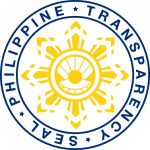
In this world, they say that nothing is permanent but change. Our everyday experiences are totally unique to what we have experienced from before. For the past decades, we have experienced many changes such as to where we choose to live, the roles of men and women in the society, and the changes in the environment that affects the climate. At the same time, global change is introducing quickly evolving diets and food conditions. These changes are some of the context to malnutrition among children. Like anything else, is changing too.
Malnutrition is a global occurrence in which no country in the world can continue to neglect. A term previously intricately tied to depictions of poverty and starvation, malnutrition is now also used to identify children with stunting and wasting, but even those suffering from shortages in vital nutrients and minerals, as well as the increasing numbers of children and young people impacted by overweight and obesity.
In the UNICEF report entitled The State of the World’s Children 2019; it stated that the numbers are becoming worryingly high. Globally, one in three (1 in 3) children under the age of five (5) is stunted, wasted or overweight and, in some cases, suffers from a combination of two of these forms of malnutrition, while in East Asia and Pacific it is nearly one in five (1 in 5).
In the Philippines, despite the overall economic growth, the percentage of stunted and nutrient-deficient children is slow to reduce due to several factors including poverty, natural and manmade disasters, low consumer demand for nutritious food, agriculture policies focused predominantly on rice self-sufficiency, and limited capacity of some local government units to deliver nutrition interventions.
Beyond health, slow progress on malnutrition is also impacting the social and economic development of the country. The commitment to improve nutrition must be taken seriously at national and local levels, and coordination must be strengthened. Sustainably managing malnutrition in the country requires a lifecycle approach that will address all children, adolescents, pregnant and lactating mothers, with a variety of strategy tailored to the local needs and coordinated across multiple levels and sectors of government.
The extent of the country’s malnutrition crisis desperately demands greater community engagement and participation at the grassroots level, which is why the Presidential Decree No. 1569, s. 1978 or also known as the Barangay Nutrition Program (BNP) was enacted. The Program is being implemented to tackle the issue of malnutrition that especially affects school children, pregnant women and lactating mothers, and other mitigating factors that influence the community’s health and nutritional status as a whole.
According to the Department of Health, BNP is a human resource development strategy of the Philippine Plan of Action for Nutrition, which involves the recruitment, training, deployment and supervision of volunteer workers or Barangay Nutrition Scholars (BNS). BNS volunteers are deployed in every barangay in the country to monitor the nutritional status of children and other nutritionally at-risk groups and/or link communities with nutrition and nutrition-related service providers.
To date, a total of 49,779 BNS are deployed in 39, 942 barangays nationwide. The basic tasks of the BNS volunteers include caring for the malnourished, mobilizing the community, linkage-building, keeping records, and other forms of BNS assistance. The volunteers locate and identify malnourished children through a community survey referred to as the “Operation Timbang Plus”. The survey involves weighing and measuring the length of height of all preschoolers and interviewing mothers to determine how the children is cared for, and the resources available in the family and their participation in nutrition-related interventions. The BNS links the people needing nutrition intervention and the barangay service providers with the barangay master list of stunted, underweight and overweight children, pregnant mothers and lactating mothers. As such part of the BNS training is to learn the different nutrition interventions and the different barangay workers.
The path forward is to ensure access to the information and data needed to advise and implement a variety of appropriate strategies targeting vulnerable groups. Interventions must be context-specific and consider the disparity in access to affordable food, purchasing power and socioeconomic health, the increasingly changing economy and urbanizing climate and the insecurity in communities at risk of natural and manmade hazards and living in geographically remote and deprived regions.
It requires a strong commitment, good understanding and clear acknowledgement of a shared responsibility to address the alarming nutrition situation. As several factors are needed to be addressed, it also requires effective coordination across local government, including the health, agriculture, social welfare and development, and education sectors, in addition of the development partners and the country’s private sector.
The author is currently the Program Officer, Volunteerism for Development Communication and Advocacy Program, Philippine National Volunteer Service Coordinating Agency.
(Visit the PNVSCA website, www.pnvsca.gov.ph, and PNVSCA Facebook, facebook.com/PNVSCA, for other stories and information on volunteering in response to COVID-19).




